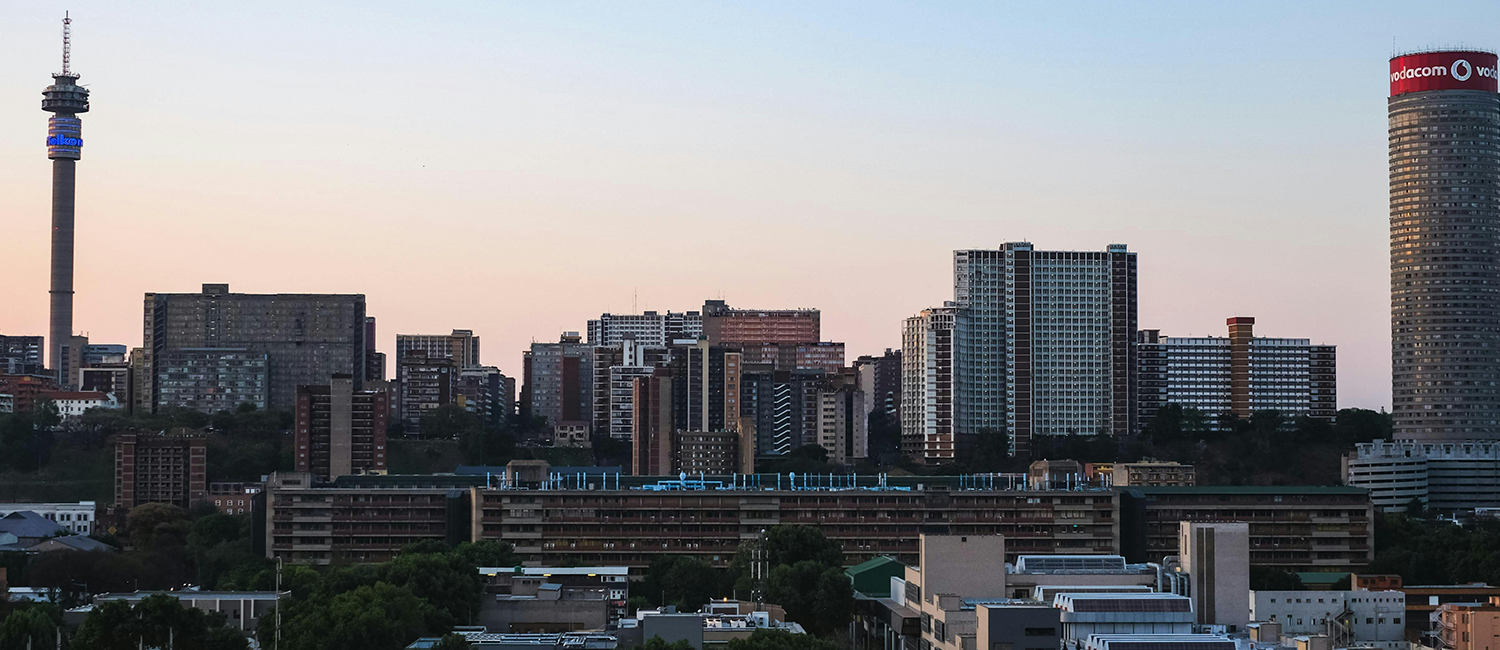The Inner City Roadmap, recently introduced by Joburg Executive Mayor Parks Tau, provides a comprehensive, integrated, long-term strategy for shifting the City’s inner city regeneration drive up a gear.
The City of Johannesburg has introduced a new strategy to breathe life back into the inner city. The Inner City Roadmap, championed by Johannesburg Executive Mayor Parks Tau, as taken over from where the Inner City Charter, developed in the previous administration, left off.
“The Inner City Charter was a regenerative strategy focusing on property and environmental upgrades. The Inner City Roadmap, on the other hand, is a transformative, precinct-based approach,” says Member of the Mayoral Committee for Development Planning Roslynn Greeff.
The battle against crime, grime and urban decay started way back in 2007, after the inner city lost its allure following the flight of investors and capital to upmarket areas such as Rosebank and Sandton. Under the Inner City Roadmap, the drive to restore the inner city to its former glory has moved up a gear.
In his State of the Province address in February, Gauteng Premier David Makhura said the provincial government would mobilise R10-billion in public and private investments over the next five years to regenerate the Johannesburg CBD, “the seat of the provincial government”.
Taken together, these two bold steps are probably the strongest indications yet of the City and the Gauteng Provincial Government’s determination to reverse the degeneration of the inner city. Says Councillor Greeff: “We are reclaiming the heart and soul of the inner city.”
The Inner City Roadmap was developed following an extensive review of the progress, successes and shortcomings of the Inner City Charter and alignment with the City’s Growth and Development Strategy 2040.
BUILDING ON WORK ALREADY DONE
Under the Inner City Charter, almost R2-billion had already been spent around the city on greening public spaces, upgrading derelict buildings, developing the Rea Vaya bus rapid transit (BRT) system, upgrading housing and other infrastructure, and making the city more eco-friendly.
At times the heart of the city has seemed like a huge construction site – first with the construction of the Rea Vaya BRT lanes and stations, then with the laying out of cycling lanes and building of new malls.
The Troyeville Hotel was restored, as was Chancellor House, the building that housed the law firm run by struggle stalwarts Nelson Mandela and Oliver Tambo in the 1950s.
Unlike the Inner City Charter, whose lifespan was five years – from 2007 to 2012 – the Inner City Roadmap is a long-term strategy.
“This is a holistic approach to addressing the challenges in the Inner City,” says Councillor Greeff. “You want to have a productive inner city. This strategy is very comprehensive. It’s not static, and all projects are aligned with the City’s vision of being an inclusive city.”
The strategy was approved by the mayoral committee in September 2014, and since then it has been all hands on deck. “Implementation is under way. We are planning to officially launch the Roadmap before the end of this financial year,” says Greeff.
TAKING OVER, REFURBISHING HIJACKED BUILDINGS
As Greeff was speaking, the Johannesburg Social Housing Company (Joshco) was handing over to 168 homeless inner city residents the keys to their new flats at the newly renovated, 10-storey Europa House.
Previously an office block, Europa House was one of the rundown properties that Joshco, the City’s social housing company, bought and refurbished after it had been hijacked by slumlords.
The company plans to buy more such buildings and refurbish them to provide much needed low- to middle-income housing.
In the past year alone, 1 294 people were arrested in connection with hijacking buildings in the inner city. Of these, 57 were prosecuted and 37 convicted. At least 45 buildings were secured and handed back to their owners.
“Building hijacking has been an ongoing problem. Getting these people to justice is a lengthy process, but we are now on top of it,” says the City’s Region F spokesperson, Shaun O’Shea.
The City recently passed a problem properties bylaw, which will enable it to address slumlords more effectively.
CRIME ON THE DECREASE
“Crime has also decreased tremendously in the inner city since CCTV cameras were installed,” says O’Shea. “Crime is not as prevalent as it was five years ago. Of course, petty crimes are still a sporadic occurrence.
“The number of problem properties has also declined. We have very good relations with the South African Police Service, the Hawks, South African Revenue Service, National Prosecuting Authority and other stakeholders.”
Major companies, led by Absa and others, are returning to the inner city.
“Our vision is a 24-hour city, where people can work, live and play,” says O’Shea.
“So much work has been done over the past 10 years to regenerate the inner city. There has been so much development by the City and its partners, including private property developers, who have invested millions into projects such as Maboneng, Westgate and Newtown precincts. Gandhi Square has been regenerated too.”
The South Hills mixed housing development, which forms part of the Turffontein Corridor, is expected to get off the ground soon. More than 5 000 mixed-housing units are to be built in the area, which is six kilometres from the Johannesburg CBD.
O’Shea admits, though, that there are still challenges. “Taxi and waste management are still big issues, but we are working around the clock to address them.”
Source: www.joburg.org.za

